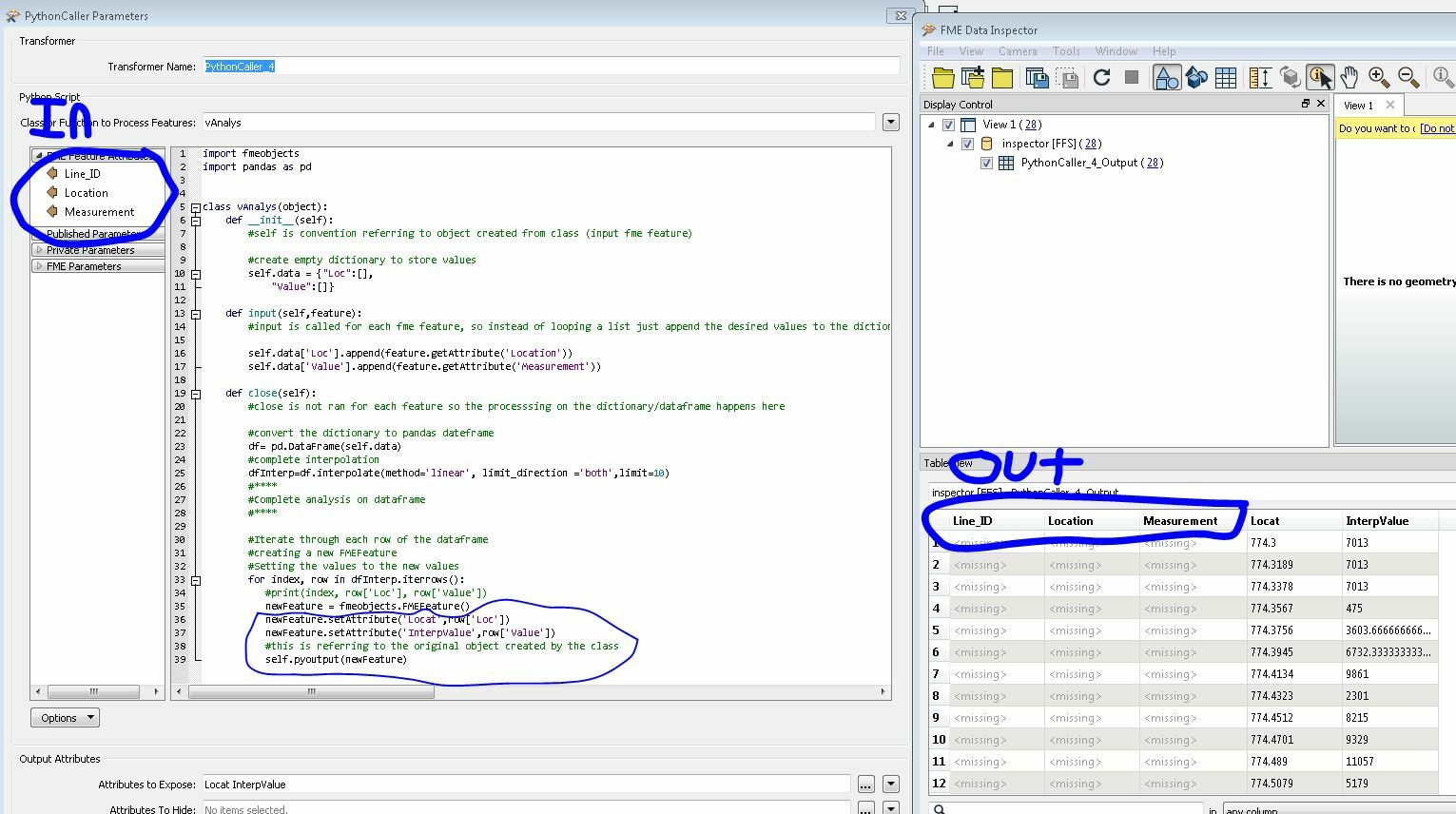Hello,
This question is primarily caused by this being my first python class implementation in FME.
The basic question is? How do I output a new set of features while not outputting the original ones?
Details below:
- I am reading in a set of features to a python caller -class-
- appending them to a dictionary which in turn is converted to a pandas dataframe for analysis on the set of data
- Issue: I have been having trouble outputting the new data in the way I want to:
- What I wanted to do was "drop" the original input fme features and create a new set of features with the new values based on the dataframe. I wanted to do this as I thought it would be quicker than matching the new values to the original input feature
- The issue is shown in the last loop of the code where newFeature = fmeobjects.FMEFeature() is used to create a new feature and assign attribute values, but in the end I am calling self.pyoutput(newFeature) which I believe is referring to the object created from the input features
- How can I output new features without referring to the original data?
- The current output looks like below, I know I could just remove the old unnecessary columns after the python caller runs, but I also know I am doing this wrong and would like to correct my mistake.
import fmeobjects
import pandas as pd
class vAnalys(object):
def __init__(self):
#self is convention referring to object created from class (input fme feature)
#create empty dictionary to store values
self.data = {"Loc":[],
"Value":[]}
def input(self,feature):
#input is called for each fme feature, so instead of looping a list just append the desired values to the dictionary
self.data['Loc'].append(feature.getAttribute('Location'))
self.data['Value'].append(feature.getAttribute('Measurement'))
def close(self):
#close is not ran for each feature so the processing on the dictionary/dataframe happens here
#convert the dictionary to pandas dataframe
df= pd.DataFrame(self.data)
#complete interpolation
dfInterp=df.interpolate(method='linear', limit_direction ='both',limit=10)
#****
#Complete analysis on dataframe
#****
#Iterate through each row of the dataframe
#creating a new FMEFeature
#Setting the values to the new values
for index, row in dfInterp.iterrows():
#print(index, row['Loc'], row['Value'])
newFeature = fmeobjects.FMEFeature()
newFeature.setAttribute('Locat',row['Loc'])
newFeature.setAttribute('InterpValue',row['Value'])
#this is referring to the original object created by the class
self.pyoutput(newFeature)










